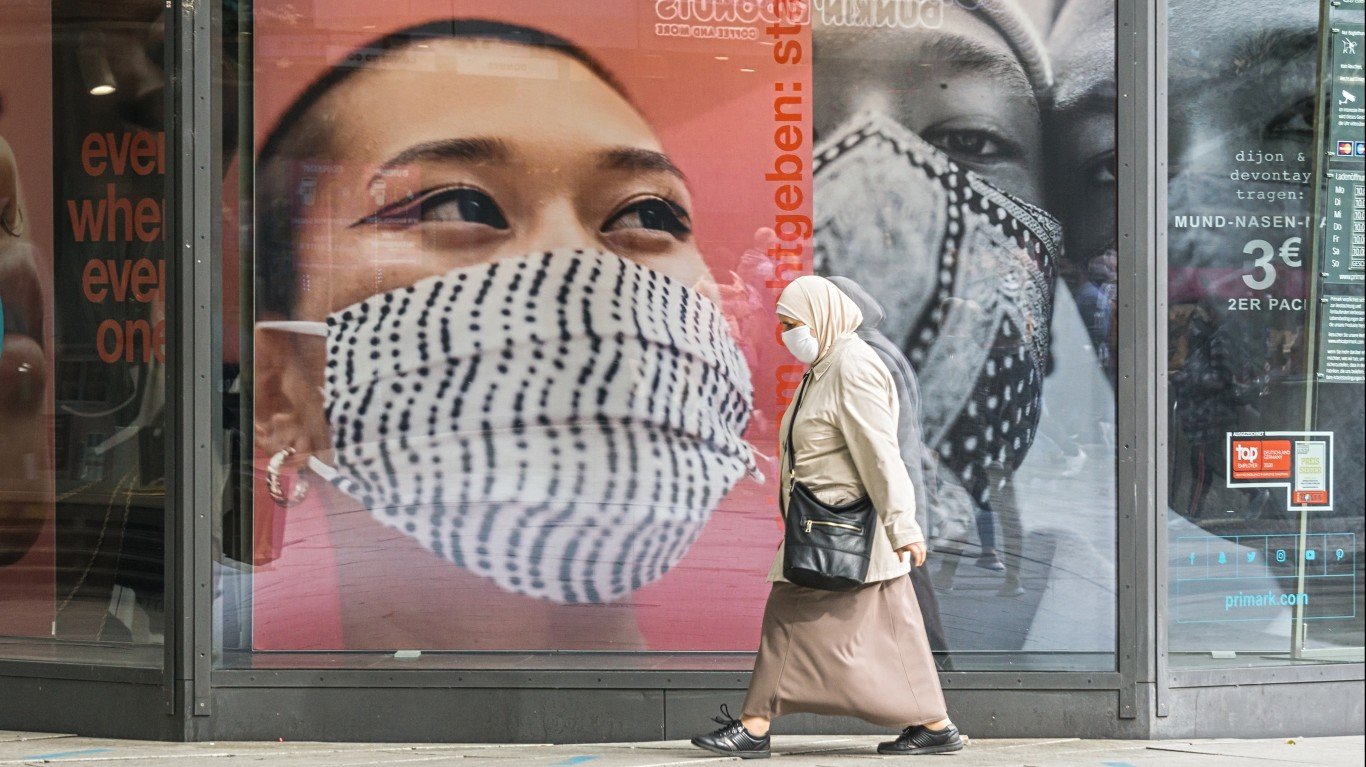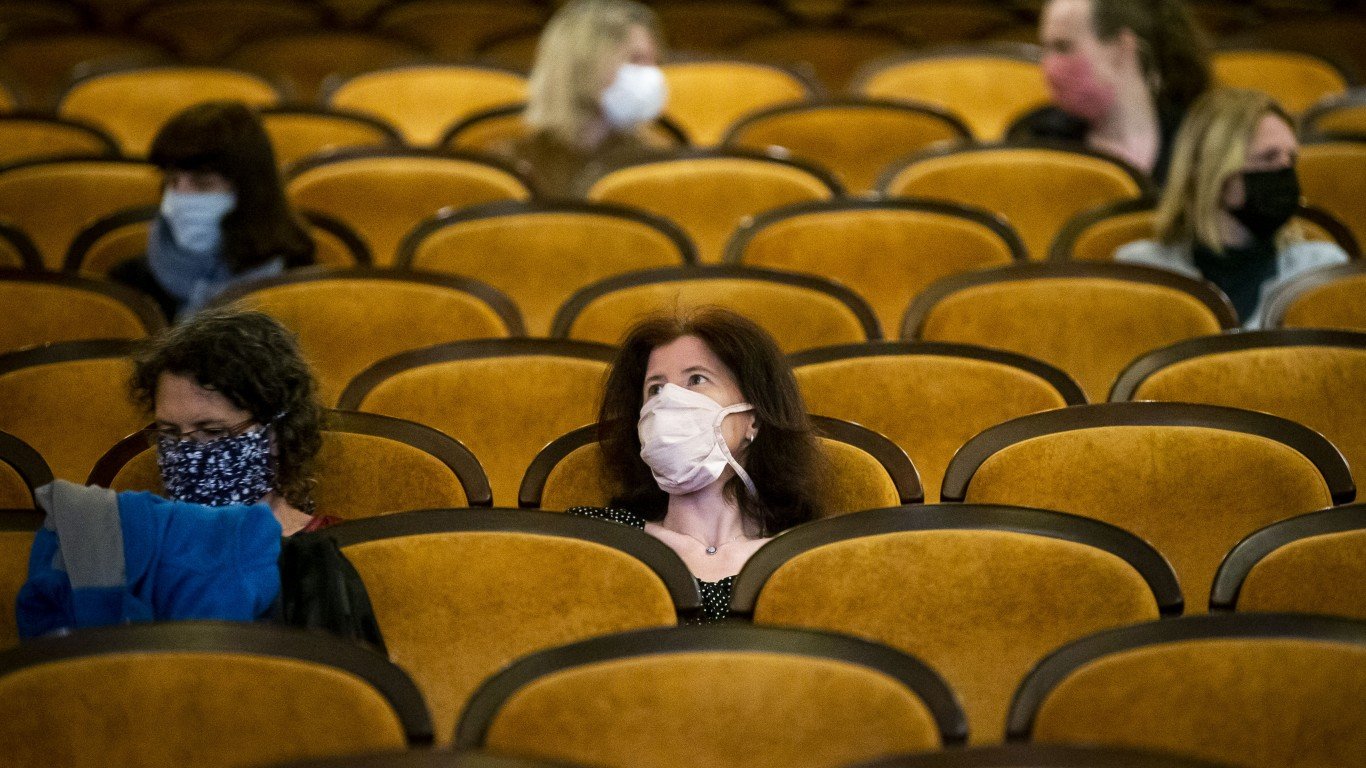

The rate of the spread of COVID-19 has slowed across America. Infection numbers dropped to their lowest point in almost a year for the week of May 17 — which itself showed a decrease of 26% from the previous seven days.
Nevertheless, close to 600,000 Americans have died of the disease. That accounts for almost 20% of the approximately 3.5 million people claimed by the pandemic worldwide. We’re obviously not out of the woods yet. (This is the city in every state with the most COVID-19 cases.)
Variants have become a large part of the conversation among public health officials and epidemiologists. The Centers for Disease Control and Prevention (CDC) officially tracks a number of them. According to The New York Times, as of May 24, some 49% of Americans have received at least one dose of a vaccine, and 39% are fully vaccinated — but authorities worry that vaccines might not fully protect against all the new variations, some of which may be not only more transmissible but also deadlier than others. (These are the states where the most people are refusing the COVID-19 vaccine.)
While vaccines are a major weapon against the spread of the disease, there are several others that have long been in place.
Click here to see why scientists say that social distancing may not work.

What else can we do to protect ourselves besides getting vaccinated?
The same things that have been recommended to us since (almost) the beginning: wear a mask and observe social distancing, even as vaccination rates increase.
[in-text-ad]
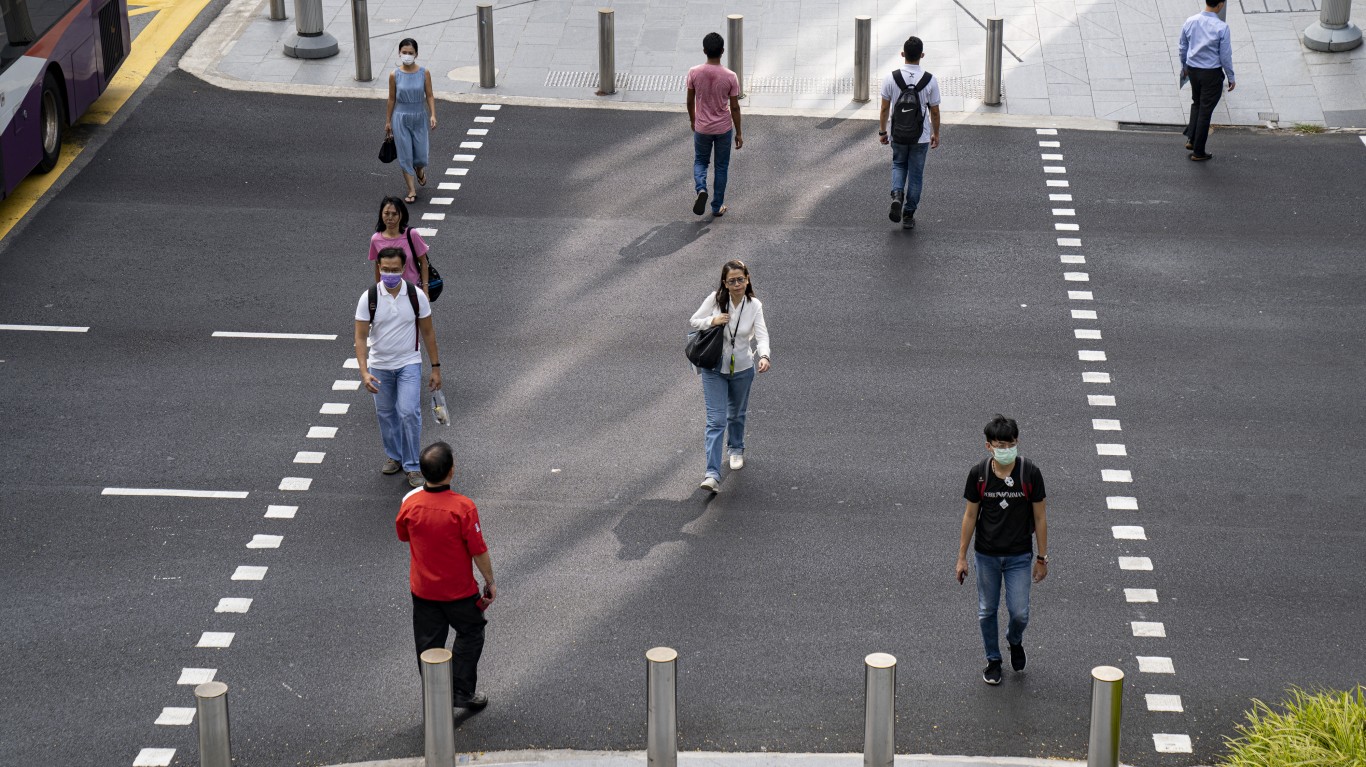
Does social distancing really work?
Yes, though perhaps not as efficiently as we might think it does. We’ve long been told that in circumstances requiring social distancing, we should stay at least six feet away from other people. It turns out, though, that six feet isn’t necessarily the magic number.
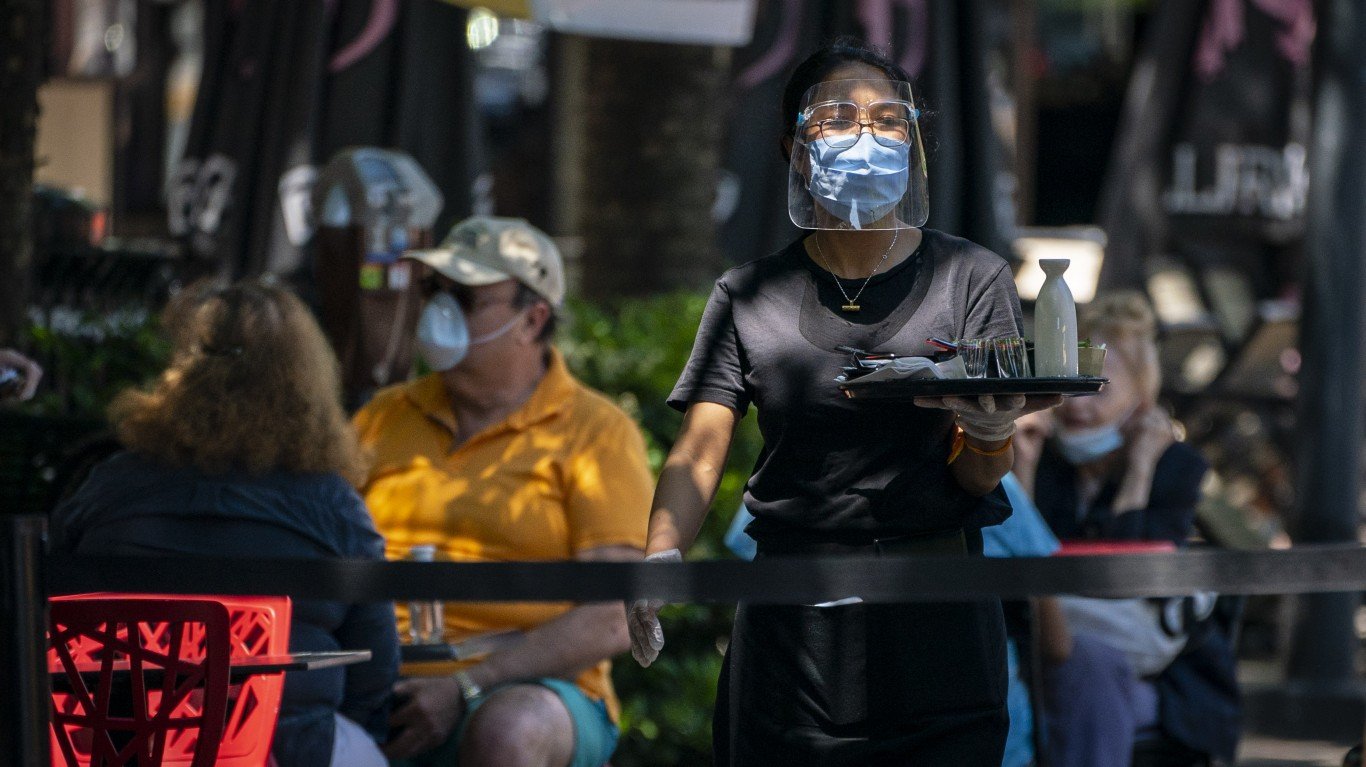
How far apart should we stay, then?
That depends. In a paper published in April, two scientists from MIT noted that “the Six-Foot Rule [is] a guideline that offers little protection from pathogen-bearing aerosol droplets sufficiently small to be continuously mixed through an indoor space.” In well-mixed spaces, they add, “one is no safer from airborne pathogens at 60 ft than 6 ft.”
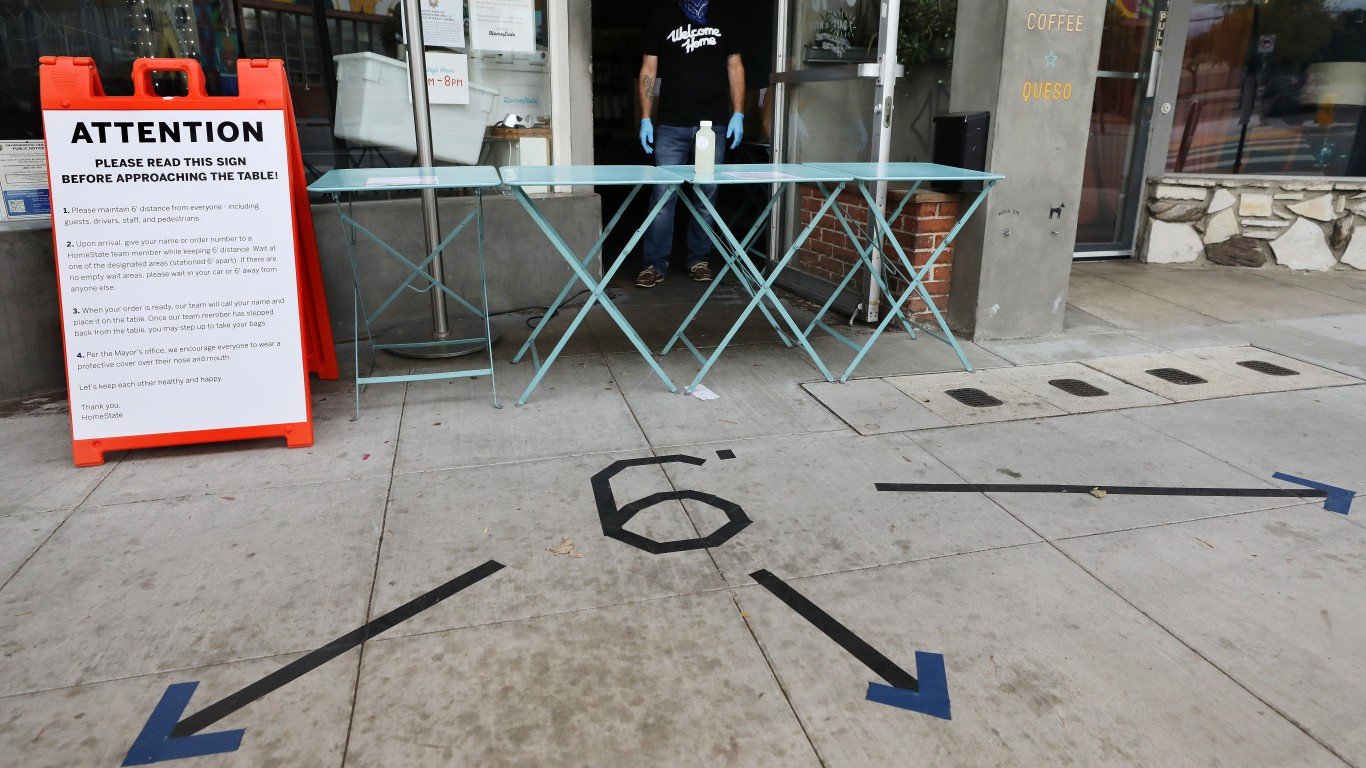
Why one size doesn’t fit all
The scientists explain why one indoor space with six-foot social distancing might be safe while others might not be. Safety, they say, “depends on the rates of ventilation and air filtration, dimensions of the room, breathing rate, respiratory activity and face mask use of its occupants, and infectiousness of the respiratory aerosols.”
[in-text-ad-2]
What does all this mean?
That extra caution is warranted in indoor spaces, even as vaccination rates increase and infection rates decline — and that there is still a great deal to be discovered about how this pernicious disease is spread.
Take This Retirement Quiz To Get Matched With An Advisor Now (Sponsored)
Are you ready for retirement? Planning for retirement can be overwhelming, that’s why it could be a good idea to speak to a fiduciary financial advisor about your goals today.
Start by taking this retirement quiz right here from SmartAsset that will match you with up to 3 financial advisors that serve your area and beyond in 5 minutes. Smart Asset is now matching over 50,000 people a month.
Click here now to get started.
Thank you for reading! Have some feedback for us?
Contact the 24/7 Wall St. editorial team.
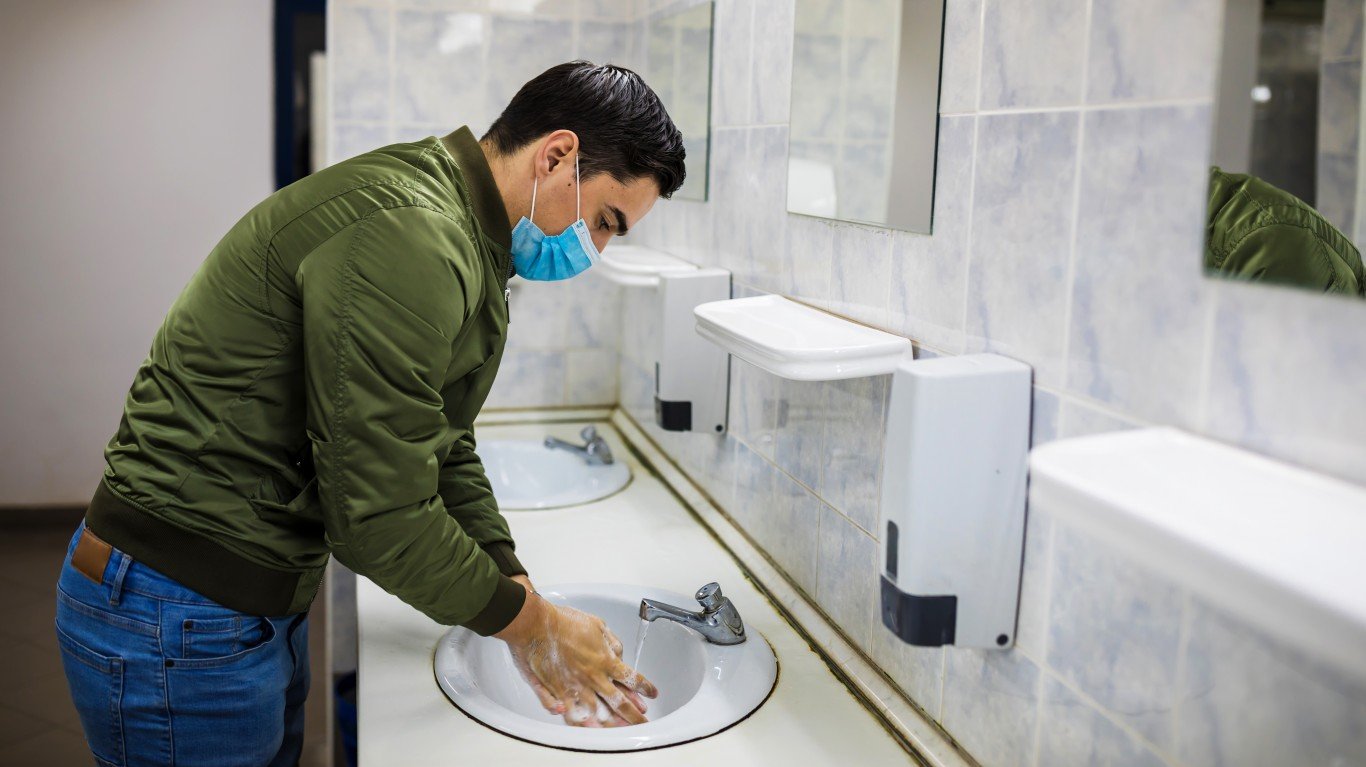 24/7 Wall St.
24/7 Wall St.